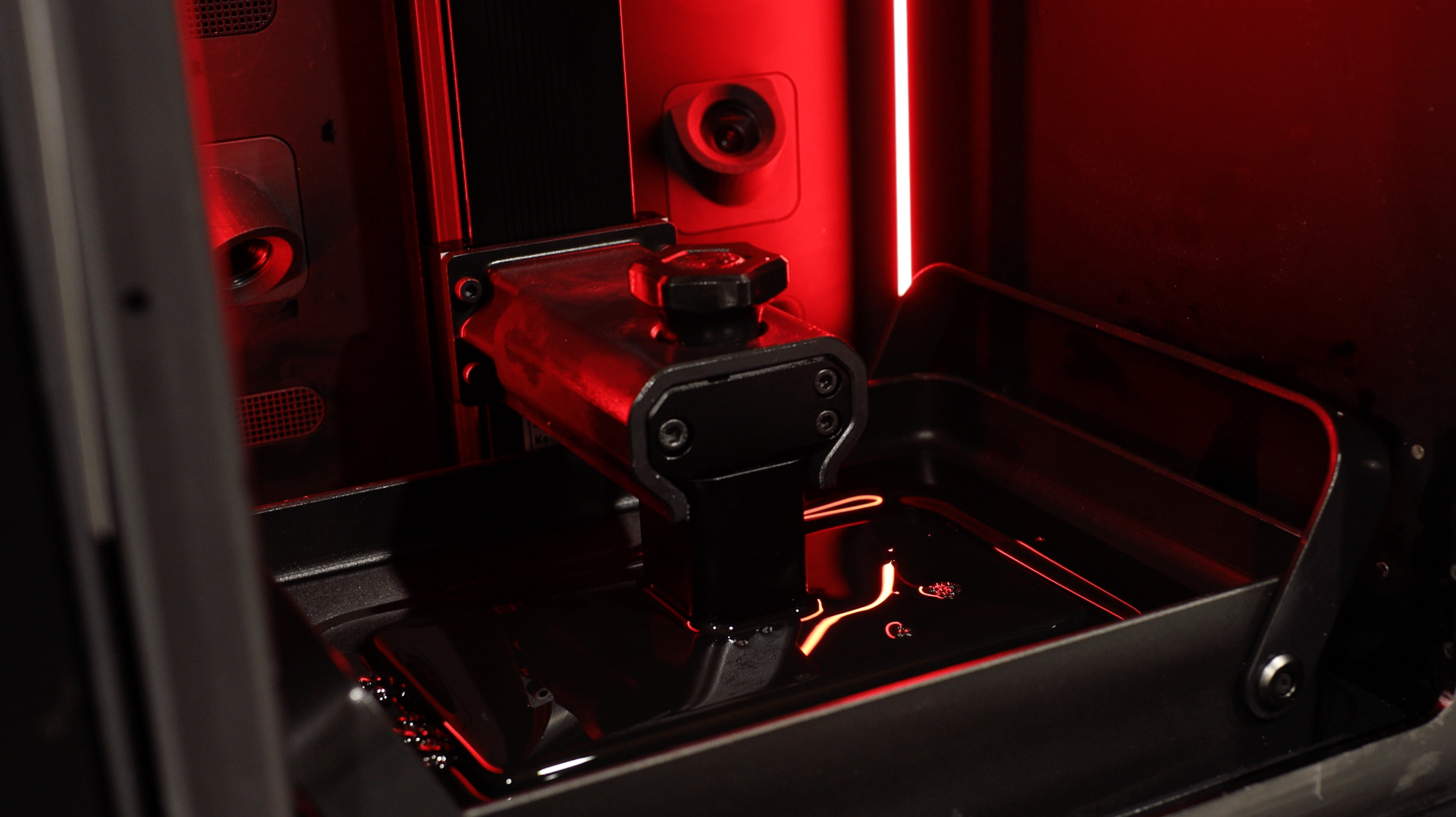3D printing global leader Stratasys announced it completed Origin‘s acquisition, a pioneering startup that develops open additive manufacturing (AM) platforms. The closing of the transaction comes shortly after its first announcement on December 9, 2020. At the time, Stratasys revealed that the $100 million cash-and-stock deal would allow the business to expand its leadership in the fast-growing mass production parts segment.
Origin’s resin-based Programmable PhotoPolymerization (P3) technology addresses a fast-growing demand for tooling and end-use parts across multiple applications. Founded in 2015 by Google and Apple alumni Joel Ong and Christopher Prucha, the San Francisco-based business pioneered a new approach to additively manufacture end-use parts by leveraging the concept of open AM, a new way to build, based on open materials, extensible software, and modular hardware.
Thanks to its software-centric Origin One 3D printer based on digital light processing (DLP), Origin produces polymer parts with exceptional accuracy and consistency by precisely controlling light, heat, and force. In just a few years, the company has managed to engage a network of partners, such as Henkel, BASF, and DSM, to develop a wide range of commercial-grade resins for its system. The collaborations resulted in what the company claims are some of the toughest and most resilient AM materials.
 The Origin One 3D printer. Image courtesy of Origin
The Origin One 3D printer. Image courtesy of Origin“The completion of this acquisition marks an important milestone for Stratasys, positioning us to generate meaningful incremental revenue from a wide range of new market opportunities for mass production,” said Stratasys CEO Yoav Zeif. “I’m confident that Origin’s innovative solutions will be a key contributor to strong company growth beginning in 2021 and help us further realize our strategic goal to fortify our leadership position as the “first choice” for polymer 3D printing.”
During 2020, Stratasys struggled to remain a global leader, dealing with some of the consequences of the COVID-19 pandemic, which wreaked havoc throughout businesses worldwide. The company saw its revenue fall in the first two quarters of the highly unprecedented year but hoped to turn its luck around with new strategies to accelerate the adoption of AM. Origin’s acquisition has shed some light on the company’s end-of-year expectations, particularly since Stratasys considers Origin’s proprietary P3 technology to be an important growth engine that could add up to $200 million incremental annual revenue within five years.
The impact of the acquisition on Stratasys’ diluted non-GAAP earnings per share is expected to accelerate the company’s growth rate and be slightly dilutive to non-GAAP earnings per share in 2021 and incremental to non-GAAP earnings per share by 2023. Furthermore, the incorporation will help fortify Stratasys’ leadership position in polymers and production applications of 3D printing in industries such as dental, medical, tooling, and select industrial, defense, and consumer goods segments.
 Origin One during the printing of the clamp. Image courtesy of Origin
Origin One during the printing of the clamp. Image courtesy of OriginAt the time of the acquisition’s first announcement, 3DPrint.com’s Executive Editor and Vice President of Consulting at SmarTech Analysis, Joris Peels, caught up with Prucha to learn more about this strategic move. The CEO of Origin had revealed that the “startup-turned-subsidiary” would benefit from being a part of a larger corporate entity, share corporate functions, and lean on Stratasys’s extensive reseller network. Even more so, he described how the “combined company will embrace the ecosystem model.” This translates to better pricing, new applications, and more manufacturing with 3D printers.
Peels also provided some insight into Stratasys’ tactical shift and what it means for the 3D printing industry. He said that this is a “very logical move toward more open systems” and a “positive development” for shareholders, one that gives Stratasys a real chance of capturing global market share in stereolithography (SLA) for a relatively affordable price. As for the industry as a whole, the move is a significant one, broadening the scope of open printers and open materials for manufacturing.
“Only open gives large customers the confidence that they won’t be locked into one system or materials vendor and depend too much on them forever,” concluded Peels.
Subscribe to Our Email Newsletter
Stay up-to-date on all the latest news from the 3D printing industry and receive information and offers from third party vendors.
You May Also Like
The Third World War & The Disruption of US Military Power
A Reddit user once remarked, “The most terrifying capability of the United States military remains the capacity to deploy a fully operational Burger King to any terrestrial theater of operations...
Australia to Go Orbital: Gilmour Space Gears up for Historic Launch
Australia is on the brink of a historic achievement in space exploration. Gilmour Space Technologies, a pioneering company based on the Gold Coast, has secured the nation’s first-ever orbital launch...
3D Printing Webinar and Event Roundup: November 10, 2024
We’ve got another busy week ahead of webinars and events around the world! There are multiple open houses and conferences, advanced AM training, a 3D printer launch event, our own...
3D Printing News Briefs, November 9, 2024: Concept Car, Afloat 3D Printing, & More
In today’s 3D Printing News Briefs, we’ll start with business, as Anisoprint appointed AM industry veteran Tuan TranPham as President of the Americas and APAC. Then we’ll move onto automotive...




































